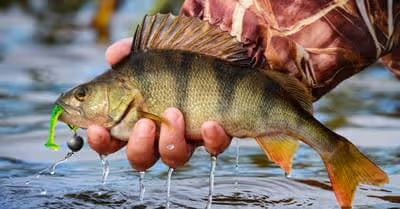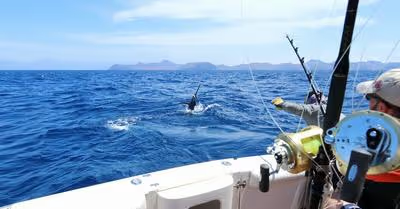Table of Contents
Fishing Rods
Fishing rods are probably going to be the most challenging fishing gear when traveling on a plane. While the TSA does not have any specific restriction against bringing your fishing rod onto a plane, they’re generally large and awkwardly long. As such, packing them to meet the specific regulations put in place by the airline carrier can present the biggest headache.
In other words, fishing rods are allowed on airplanes but the biggest issue revolves around carry-on size limitations. Keep in mind that carry-on size limitations slightly vary from airline to airline, so be sure to check with various airlines to find out their carry-on size in terms of length, weight, and width before you book.
It’s important to make sure that you properly pack your fishing rods so that they aren’t deemed dangerous. You can consider investing $20 in a rod case that can perfectly carry two or three fishing rods as this will make traveling a lot easier. You can also consider investing in travel rods that can be disassembled in three or four pieces to make them very compact for your travel. The only problem is that travel rods generally handle small fish species and can limit you if you’re planning to go for bigger fish. You can, therefore, choose to go with a one-piece rod but you must be ready to check them in.
All in all, you’ll be safe to fly with your fishing rod if it is within the carry-on limitations set by the airline carrier.
Fishing Reels
Fishing reels are sturdier than you think and can perfectly fit at the bottom of your carry-on backpack. They can fit in a backpack with ease and so it shouldn’t be a problem traveling with them. If you aren’t comfortable with the reels inside your carry-on bag, you can put them between your clothing inside your check-in bag.
If your fishing reel is very expensive and you do not want to risk having it in pieces even before you begin fishing, you can invest a few dollars on a box to keep it safe but this would mean that you have to sacrifice more space for the reel. In essence, it’s very okay to take your fishing reel on a plane.
Fishing Lures and Hooks
TSA categorically states that small fishing lures and hooks are permitted in both carry-on and checked bags. You’ll, however, have to pack them properly and securely as they are deemed dangerous. Again, large fishing hooks should be sheathed, securely wrapped, and packed in the check-in luggage. The problem with this stipulation is that the TSA doesn’t state what might be considered a large hook, which can essentially leave you in a grey zone. In other words, there are no specific guidelines as to what constitutes a large hook.
So to avoid getting disappointed at the airport and having your hook confiscated, you should go with size 8 hooks or smaller. Again, always make sure that the hooks and lures are packed in the checked luggage to be on the safe side. It would also be wise to separate the hooks and lures by their weights, sizes, and styles.
You can use a smaller tackle box to carry your hooks and lures but don’t take too much just in case there’s a problem at the airport in terms of interpreting what large hooks are. In most cases, you won’t be using all your hooks and lures during the trip, so five or six different types of hooks and lures should be enough.
Scissors and other Fishing Tools
You may be lucky to get your scissors and other fishing tools onto a plane but they should always go into your checked luggage. Keep in mind that your scissors, hook sharpener, and forceps might be confiscated if you do not put them in checked luggage and this is a risk you don’t want to take.
A Better Solution
Honestly speaking, it always feels ideal catching fish using your own fishing gear. On the other hand, it may not be the most cost-effective way in some instances. So if you do not want to go through the hassle of bringing your fishing gear on a plane, a better solution can be to book a fishing charter that provides all the necessary fishing gear.
To this end, it’s always important to have a good understanding of what fishing gear you can bring on a plane before setting foot in the airport. And whatever you do, it’s only appropriate that you do not go against the rules because the law will always come on top. Most of the measures put in place by the TSA and the airline carriers are to ensure that all passengers are safe, so just comply and you won’t get booted from your flight.
Tight lines fellas!
Recent Articles
















